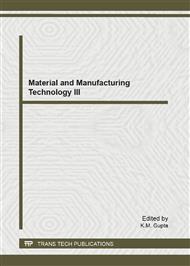p.724
p.730
p.735
p.740
p.744
p.749
p.753
p.758
p.762
Multi-Response Surface Optimisation with Different Priorities for Ramp Process Parameter Design
Abstract:
This study proposes a multi-response surface optimisation with different priorities (MRSOP) problem for determining the proper choices of a process parameter design (PPD) decision problem in a noisy environment of a ramp process in plastic injection molding. The proposed model attempts to minimise process responses of the flow mark defect and mold deposit. Firstly, Taguchi design and analysis are applied to screen out controllable design parameters significantly affecting the quality performances and the regression is then used to determine the form of the relationship between the response and design parameters. A numerical example demonstrates the feasibility of applying the proposed model to the PPD problem via two iterative methods. Its advantages are also discussed. Numerical results demonstrate that the steepest descent method is superior to the use of the linear constrained response surface optimisation method. In this study, the flow mark defect reduces from 2.63 to 1.45% and mold deposit measured by the mold cleaning frequency decreases from every 2.57 to 1.86 hours on average. All experimental data presented in this research have been normalised to disguise actual performance measures as raw data are considered to be confidential.
Info:
Periodical:
Pages:
744-748
Citation:
Online since:
July 2012
Authors:
Price:
Сopyright:
© 2012 Trans Tech Publications Ltd. All Rights Reserved
Share:
Citation:


